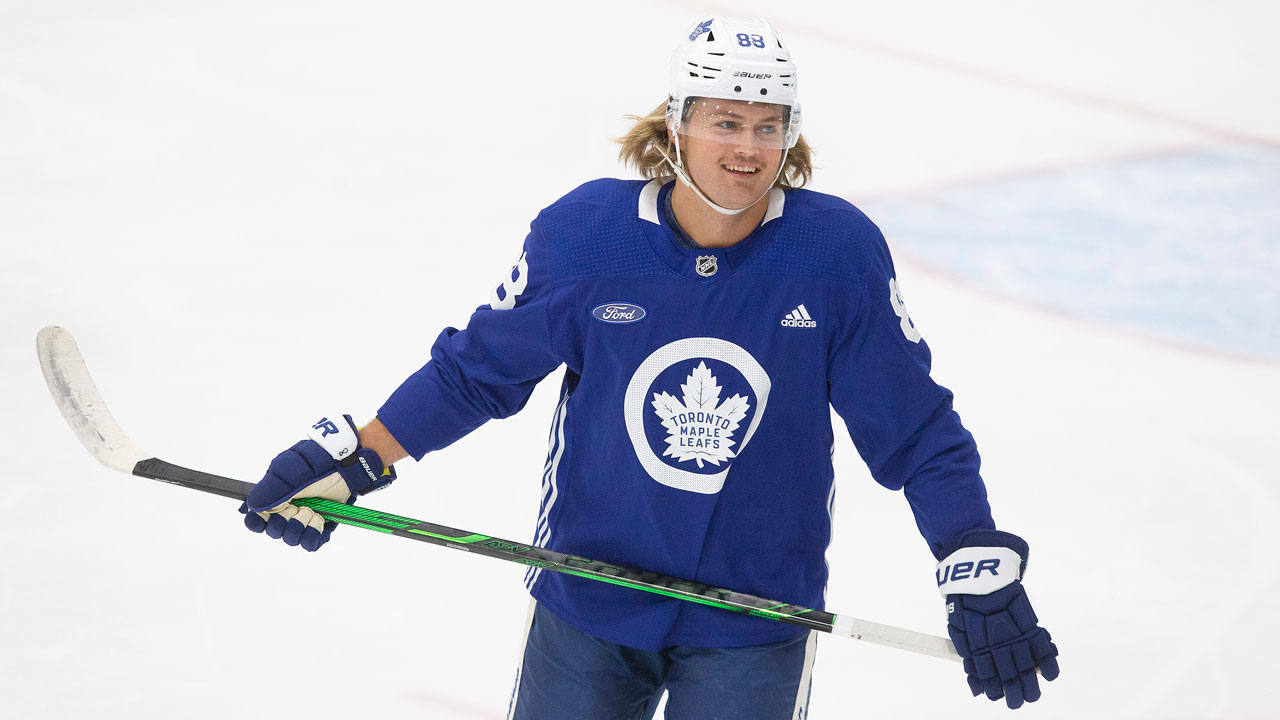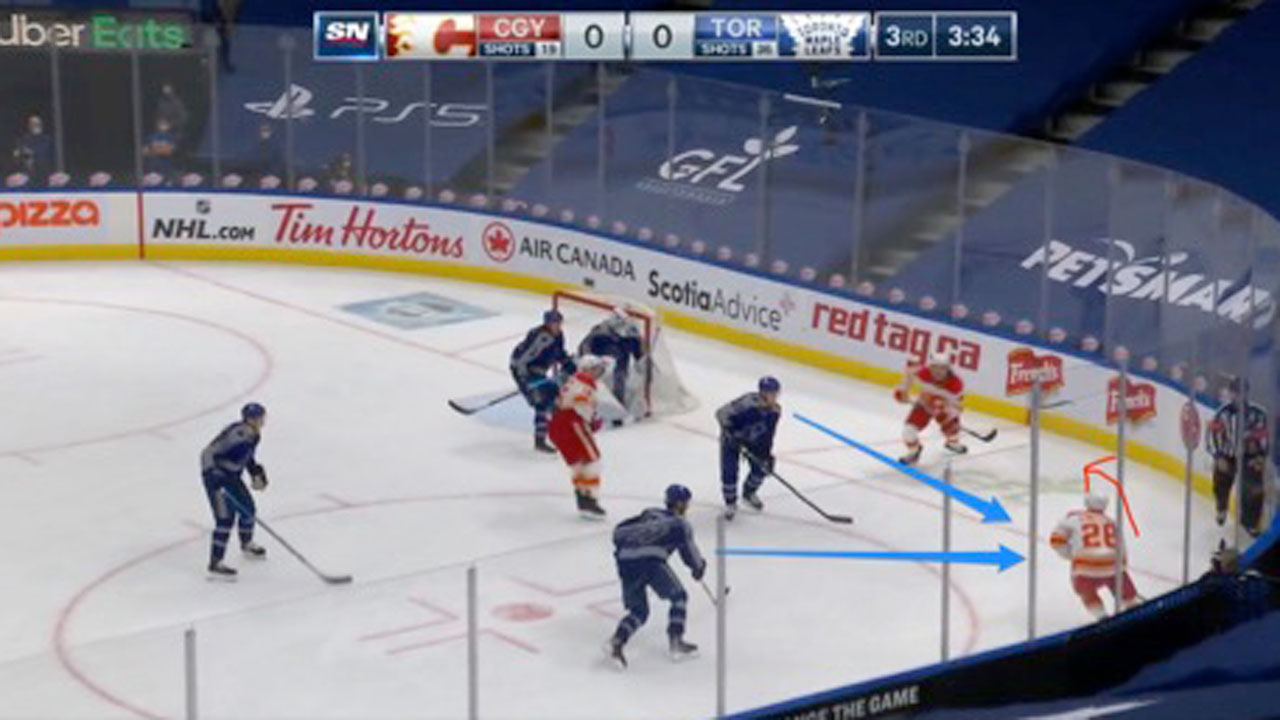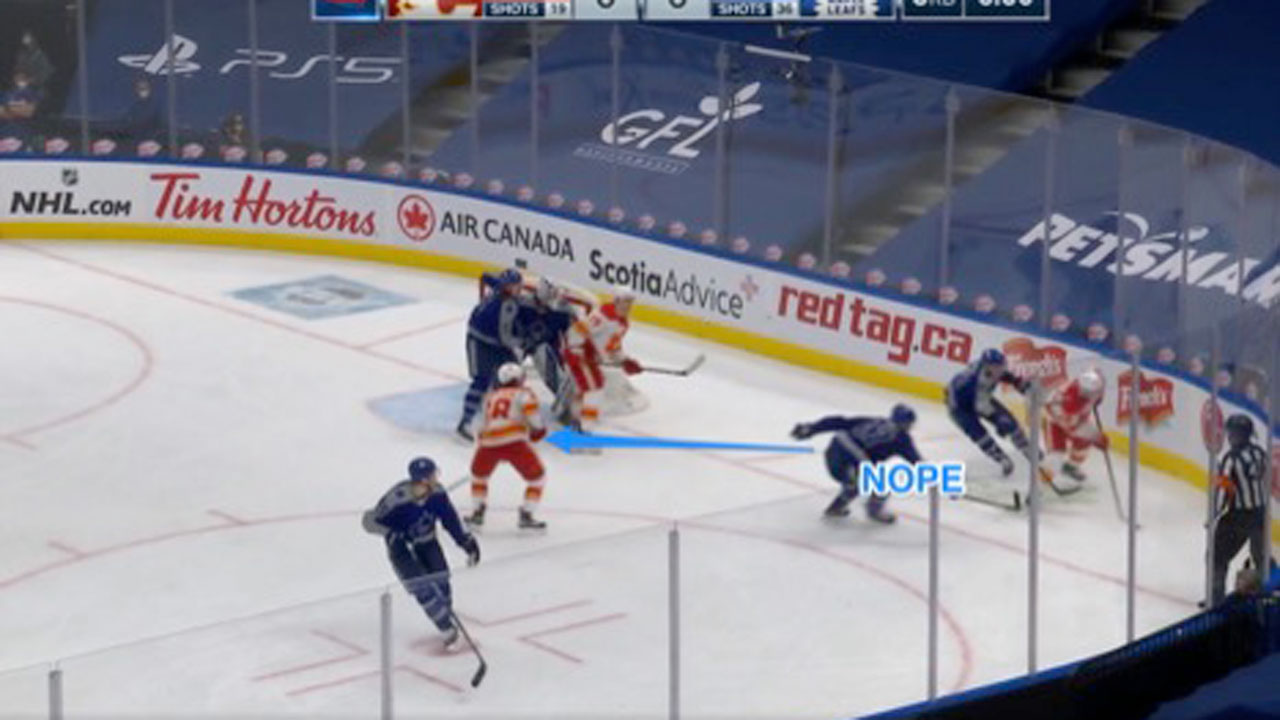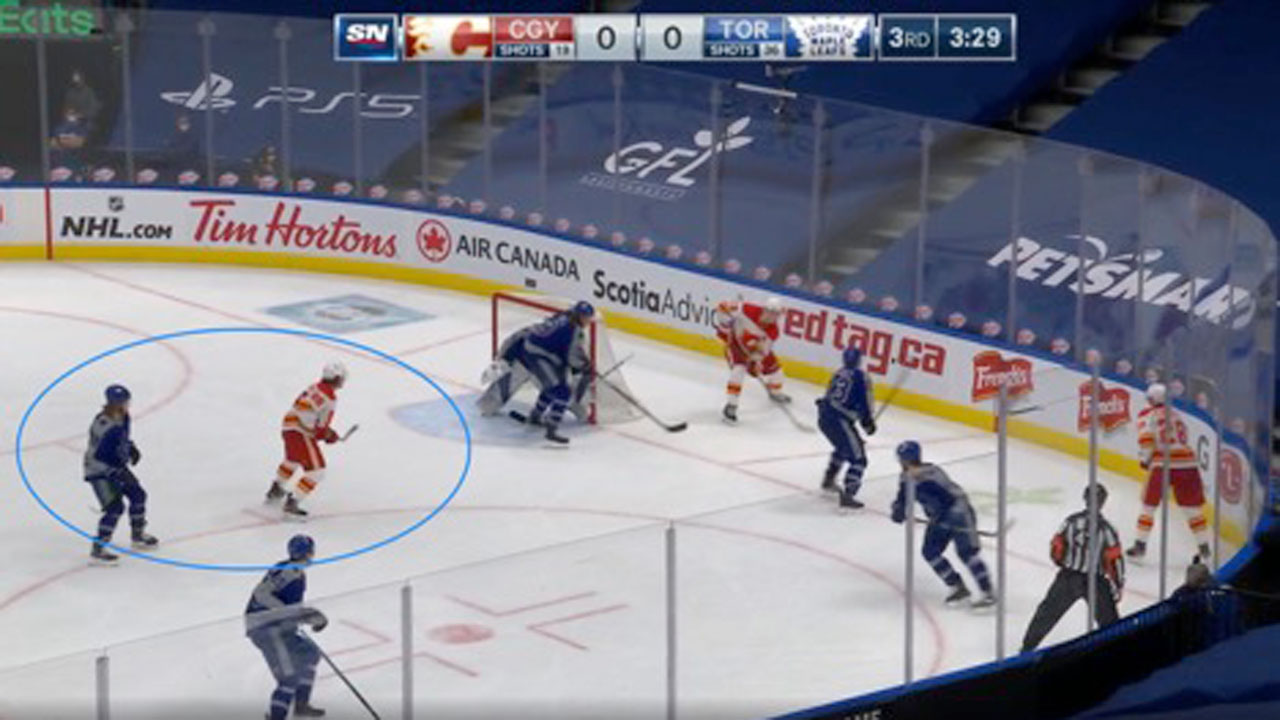
We begin this week’s episode of the William Nylander saga by evaluating his play on Wednesday night, which saw him standing inches from stopping a Flames’ player who scored what looked to be the game-winning goal… then saw him tie the game before winning it in overtime for the Toronto Maple Leafs. It was like watching the guy’s whole career boiled down to a 20-minute span, which is almost entirely a compliment given the results.
Nylander led the Leafs in shot attempts and actual shots, scoring chances and high danger scoring chances, and — of course — goals in that game. But two of those shots, chances and goals came with less than one minute remaining in regulation, and I’m not convinced that if he plays for a more hard-line coach than Sheldon Keefe (say, Keefe’s old coach John Tortorella) the opportunity for Wednesday’s redemption narrative is even there.
Through 11 games in February Nylander has seen over 17 minutes of ice per game — which I’d consider second-liner ice time and the bare minimum expectation for a guy we consider part of a “Big Four” – just twice, with the other nine games including a smattering of TOIs in the 13-14 minute range.
His ice time hasn’t exactly screamed “coach’s confidence” with some of the issues apparently being battle level and engagement issues (more on that further down). And, given his proximity to Andrew Mangiapane, the Calgary player who put the Flames up 1-0 with 3:27 left on the game clock, nobody would’ve batted an eye if Nylander were stapled to the bench as the final sand dropped through the hourglass.
Keefe knows and trusts the player’s strengths though, so when the team needed a goal he put him right back out there and was rewarded for that trust. I assure you, that sounds more logical in print — putting out a goal scorer when you need a goal — than in the real-life examples of how these situations usually play out. It’s not uncommon to see a great offensive player in the midst of an off-night watching from the bench as their team works to find one more.
So let’s start here by looking at the Mangiapane goal given its relevance to the “cons” side of the Nylander ledger, then get into the two questions in the headline: “What are you doing if you aren’t scoring?” and “Does it even matter if you score enough?”
Was Mangiapane’s Nylander’s guy?
No … but eventually yes.
For starters, Elias Lindholm has the puck low in the Leafs zone, and both Pierre Engvall and Travis Dermott have their eyes on him. A two-on-two low is shaking out, and that’s half the battle of defending — identifying numbers, situations.

With Lindholm taking it low below the goal line where Dermott is, a switch seems pretty obvious. Dermott and Engvall should be talking here, which they clearly don’t in the video. Still, though, it’s not a hard read. Engvall should hand off the puck carrier to Dermott — who Lindholm is skating towards — and just grab Mangiapane. Simple.

Engvall gets caught staring at the puck though, and either doesn’t read the switch or thinks he can disrupt the puck. Either way, it’s a poor decision.

Yeah that’s a “nope.”
Now, in-zone hockey defending is about layers, which protects against breakdowns by allowing some without a nuclear meltdown. When the puck is below the goal line, you always want your weakside wingers down below the hash marks in front of their own net.
Why? If the puck goes up to the points you can skate out at them and get in lanes, block shots, and at worst, a shot comes from a distance. If someone gets underneath you a la Mangiapane, well, this is what happens. Weak-side wingers in the D-zone with the puck low no longer prioritize the opposing D.
Nylander isn’t deep enough by some inches, and it allows Mangiapane to capitalize on the seam that’s caused as Justin Holl — who can’t be asked to defend both in front of the net and the puck carrier — tries to disrupt the play below the goal line.

So yeah, I’ve got Nylander as one of the two players most responsible for this goal against. He’s not covering anyone up that high and — as always — let me bang the drum for defending people not areas of the ice. And there’s clearly an open “people” there, Bill.
As I mentioned above though, Keefe doesn’t give up on him, he keeps using him, and that allows us to get to the whole “microcosm of a career” thing, where he scores, then scores an elite-skill goal to end the game.
So about my two questions — and the crux of the polarizing Nylander debates — “What do you do when you’re not scoring?” and “Does it matter if you score enough?”
I’ll start with the latter, and the answer to that is pretty close to “no.” Last year Nylander scored 31 times in 68 games, which is over a 37-goal pace for a full season. At that pace and higher — particularly at the “and higher” levels — most coaches barely care what else you do, though they’d never admit that. If you score every other game, you can show up on video with regularity as the cause of chances against and teams will still covet you, pay you and play you. They’ll live with that trade-off to accomplish the hardest thing to do in hockey: get goals.
But if you want to be that borderline exempt player and the puck doesn’t go in for you for a while, you’ll have to excuse the team and the general public for no longer feeling comfortable with giving free passes where no one else gets them. You don’t get to have different rules and not produce. So, you ramp up the pressure on yourself when you play like Nylander and goals dry up for a spell.
What’s frustrating about this arrangement for said teams and fans is it just feels like it doesn’t have to be this way. I do not believe that the things Nylander does that cause frustration — the nights where he lacks engagement, isn’t hard on pucks, and just misses coverages by a quarter-step on the offensive side of things — create goals for him. I truly do not, and I’m not even sure he believes they do. If he came back farther in the D-zone, he’d be just as able to create offence. If he spent his energy reserves pursuing loose pucks he may be burnt out sooner some shifts and have to change quicker, but he’d also unearth more pucks and create more chances — and in turn, get more shifts — doing it.
This all swings us around to “What do you do when you aren’t scoring?” and guys like Ilya Mikheyev and Zach Hyman — players you decidedly do not want Nylander to be — come to mind. But let’s just consider them for a sec.
How many games does Hyman have to play without a goal before fans are even aware of it? Is it 10? 15? Does anyone even care? Fans know he has value without the offensive output. They see him disrupt puck retrievals and breakouts, they see him battle at the net front and they see his lines consistently playing in the offensive zone. Mikheyev is arguably the most snake-bitten hockey player in the NHL and the team keeps handing him good linemates and ice time within two shifts of Nylander’s minutes per night because he has value without the offence.
What the staff and fans and — let’s face it — his teammates would love to get from Nylander, is 10 per cent more of the great stuff they know he’s capable of doing without the puck. It’s the stuff that isn’t always rewarded and is therfore hard to keep after, but they’ve seen what he looks like when he is dogged in his puck pursuit like the aforementioned Leafs wingers.
Take it from his coach, as noted in this article by Luke Fox:
“It’s part of Will’s nature, at times, to not be as engaged as you’d like him to be. And he needs a push. Sometimes it comes from me, but sometimes it comes from himself as well. He’s a guy that is hard on himself,” Keefe explained back in July.
Keefe tries to guide Nylander through positive reinforcement, showing him clips not of his mistakes, but rather of shifts where he’s hounding the puck with a strong stick and winning it back along the wall. He wants to instill a sense of urgency.
“At times, he doesn’t even need to see the clips. He knows the situations you’re talking about,” Keefe went on. “I showed him a number of different clips where he was all over the puck and winning pucks back. One very underrated thing about William is the way he can win pucks back in terms of takeaways in the offensive zone; he’s right near the top of the league in that regard.”
Here are some of those glorious Nylander clips Keefe is talking about:
So, he can do it.
The case here isn’t that he doesn’t put up good results when he doesn’t score, because by most shot metrics — including expected goals — he’s still among the top players on the Leafs even when the puck isn’t going in for him. The case is that all those people believe he’s so good that the numbers could be better if he gave them just a bit more of what we saw in that video, because we know what it looks like when he’s not hard on pucks and aggressive. Seeing a guy who can be so good just be OK can be maddening. It feels like just “good” should be beneath him.
Nylander remains a great talent who’s a work in progress as a complete player and a lightning rod as a result. That he continues to have enough success to make him a valuable player at the NHL level probably just makes it harder to convince him to play differently — or even the same, but just harder more regularly. But as he gets older and matures, I suspect he’ll find if not a consistent level of compete, a more consistent one.
In the end, he remains a Rorschach Test with fans seeing totally different images on the ice and every shift seems to drive that confirmation bias deeper into the ground.
It’s a bird, it’s a plane, it’s William Nylander. He’s great, he’s flawed, he’s whatever you already think he is.




